CPR for Persons in Wheelchairs
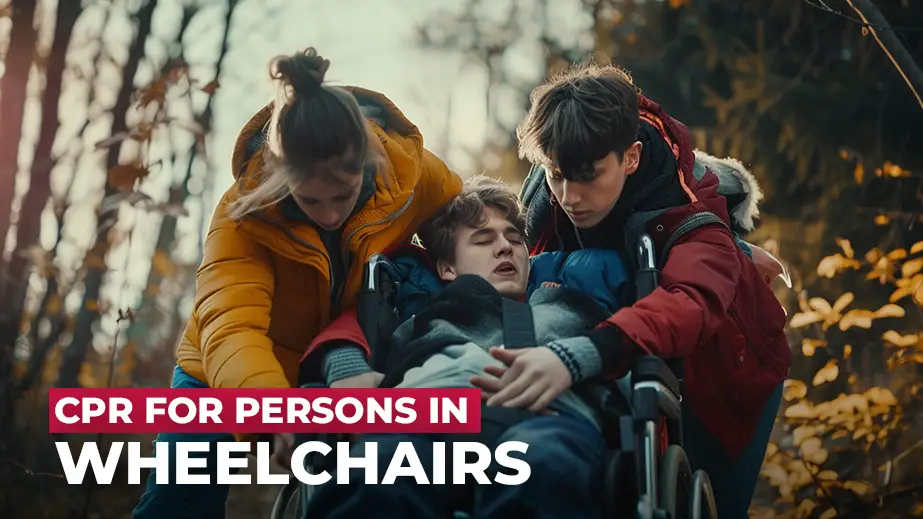

Cardiopulmonary resuscitation (CPR) is a technique used to revive someone whose heartbeat and breathing have stopped. When a person suffers a cardiac arrest, the brain cells and other vital organs are deprived of oxygen, leading to gradual damage. CPR is essential in such situations to supply and preserve these cells. Early recognition of the signs of cardiac arrest and timely CPR application can mean the difference between life and death.
CPR involves chest compressions and artificial respiration to keep blood circulating and maintain oxygen supply to the body. It is a skill that everyone should learn, but performing CPR on a person in a wheelchair can be challenging, even for trained responders.
Despite its apparent simplicity, bystanders often delay providing CPR to females and people with special conditions such as those in wheelchairs. This delayed response may be due to a lack of knowledge on what to do in such situations or the perceived complexity of the procedure due to the casualty's condition.
However, the CPR principle remains the same for all casualties, whether they are in wheelchairs or not. Some adaptations, approaches, and modifications may be necessary for effective techniques for people with disabilities.
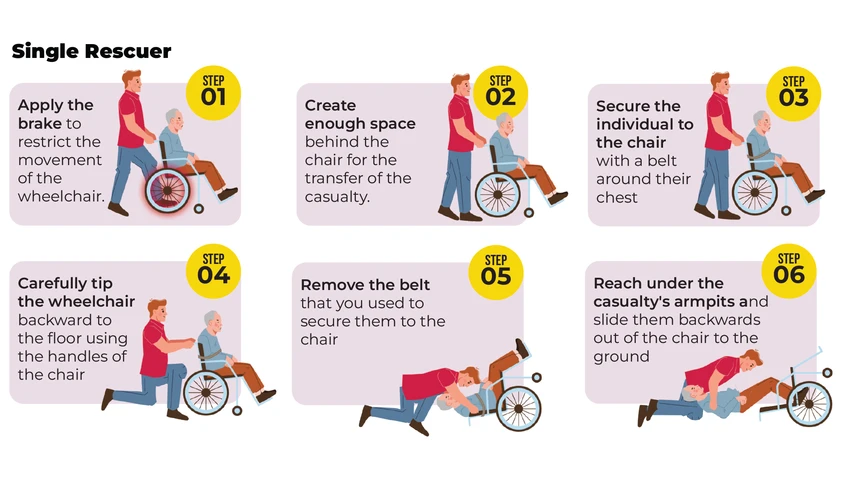
Performing CPR on a person with a disability is similar to performing CPR on a person without a disability, but adjustments may be necessary based on their specific needs.
If a carer or loved one of the casualty is nearby, you should always defer to their knowledge of the situation and their knowledge of the casualty. They may have advice on specific adjustments or requirements, depending on their medical condition.
Ask them to assist you, if possible, in removing the casualty from the wheelchair in order to perform CPR.
When calling for an ambulance, describe the condition of the casualty as best you can. You should always mention that they use a wheelchair, and anything you may note about their disability. The medical personnel on the phone may have specific advice for you with regards to how to proceed.
Depending on their medical condition and the size of their body, you may need to adjust whether you use one or two hands for compressions, regardless of age. The depth of compressions remains the same – about one third of the chest cavity.
You may also notice medical tubes, such as oxygen, attached to the casualty. These should not be removed, unless you are explicitly advised to do so by medical personnel. Keep them attached to the casualty when you remove them from the wheelchair.
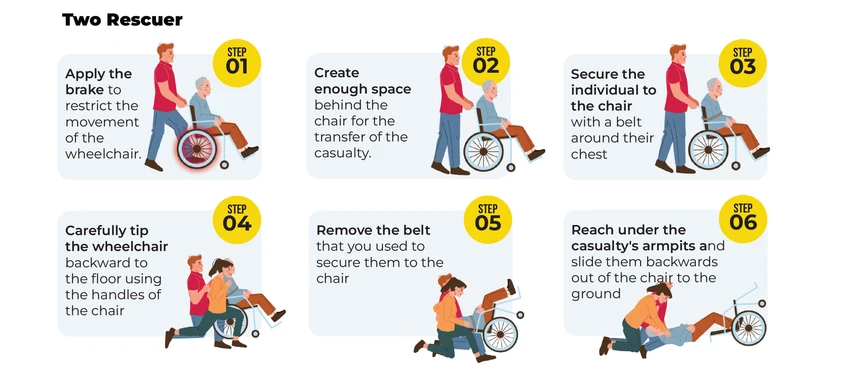
When assisting a casualty in a wheelchair during CPR, it's important to transfer them to a flat, hard surface for effective compression depth.
To ensure a safe transfer of a person from a wheelchair to the ground, follow these guidelines:
If there is more than one rescuer, you may choose to carefully lift the casualty out of the chair – one person supporting their legs, another supporting the upper body. Alternatively, follow the steps above, adjusting so that one rescuer is on each side of the casualty and wheelchair. Each rescuer can reach under one armpit to remove them from the chair.
For more information about how to perform CPR, read here.
Cardiopulmonary Resuscitation is a skill everyone should learn and be able to perform when the need arises.
However, regardless of the casualty's condition e.g., one in wheelchair, the CPR principle remains the same for all and should be started as soon as possible.
Remember to defer to the knowledge of any carers or loved ones present, and relocate the casualty to a flat surface as quickly as possible in order to begin CPR.
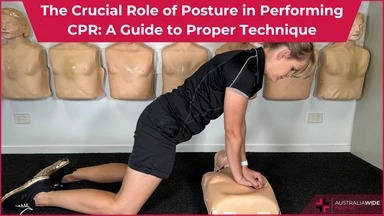
April 12, 2024
Cardiopulmonary resuscitation (CPR) is a critical lifesaving skill that can significantly improve the chances of survival for individuals experiencing cardiac arrest. While many people are trained in CPR techniques, the importance of proper posture during CPR cannot be overstated.

February 23, 2024
Despite its apparent simplicity, bystanders often delay providing CPR to people with special conditions such as those in wheelchairs. This delayed response may be due to a lack of knowledge on what to do in such situations or the perceived complexity of the procedure due to the casualty's condition. However, the CPR principle remains the same for all casualties, whether they are in wheelchairs or not.
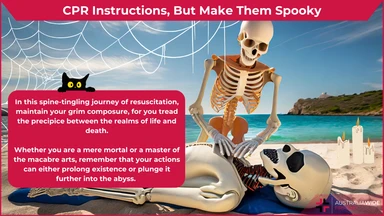
November 1, 2023
In this spine-tingling journey of resuscitation, maintain your grim composure, for you tread the precipice between the realms of life and death. Whether you are a mere mortal or a master of the macabre arts, remember that your actions can either prolong existence or plunge it further into the abyss. Proceed with a sense of dread, for you stand at the precipice of despair.